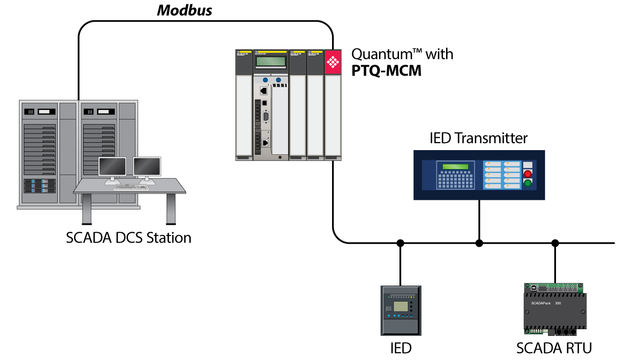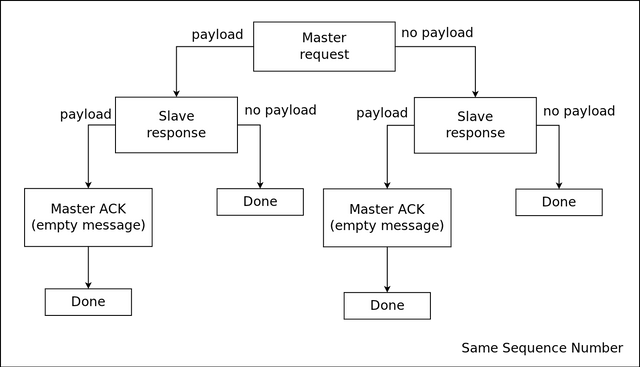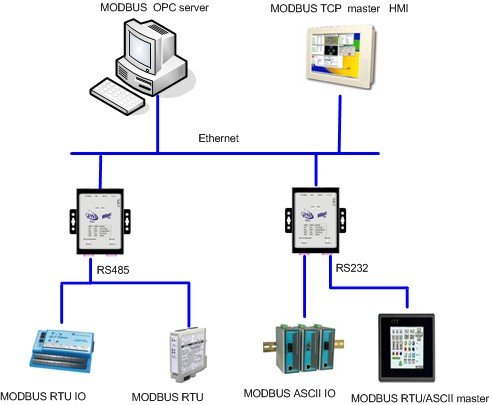Modbus Protocol
Since man appears on earth, we humans have had the need to communicate among ourselves and with the environment that surrounds us, sometimes even the need to register it, write it (language and writing) for many the great invention of the human being.
Today this need for information has not ceased; on the contrary, people need to know more and more and in less time what is happening around us, in order to be more efficient in making our decisions.


To put it succinctly and simply: Modbus is a communication system, widely used in industry, control systems, domotics, inmotics etc ... because it allows you to establish a master-slave communication, in which you send and receive data (information) that allows thanks to that information, you know what is happening.
In processes in which the demand for information and response has to be continuous and not always master - slave geographically are close; it seems necessary to create something that allows this to be possible, and establish a communications system or MODBUS protocol.
Characteristics of the Modbus Protocol
The MODBUS protocol uses the OSI format layer format where it is defined as a MODBUS protocol and thus we speak of PHYSICAL Layer, NETWORK Layer or LINK and APPLICATION Layer.
The physical layer is in charge of transmitting bits to the communication channel.
It defines the levels of the electrical signal to be used.
Controls the transmission speed (duration of one bit).
Just as there is a telephone network connected by cables of certain characteristics and electrical signals are sent in a certain way that allows us to talk to each other, the MODBUS protocol in its physical layer establishes three sublevels:
MEDIUM as is the transmission channel (cable, F.O., radio,...)
MAU (Media attachment Unit): Contains the electronics (where electrical levels are generated or received).
PLS (Physical Logical Signal): Coding in the emission of binary information to electrical signals and decoding in the reception.

Link layer
It is in charge of establishing an error-free communication between two teams.
It forms the plot organizing binary information and passes it to the physical layer.
This layer has two sublevels:
It controls when the transmission channel is free to be able to send the information.
LLC (Logical Link Control). Controls and recovers errors, also encodes and decodes the information to HEXADECIMAL or ASCII.

Programmable Logic Control appeared with the purpose of eliminating the enormous cost of replacing a relay-based control system in the late 1960s. Bedford Associates (Bedford, MA) proposed a system they called Modular Digital Controller or MODICON to a car manufacturer in the United States.
MODICON 084 was the first commercially produced PLC. With this System when the production needed to be varied, then the system was varied and this one was ready to continue working.
The later industrial development and the advance in the technologies has allowed the development of microprocessors and later the ability of communication between them approximately in the year 1973. The first system would be Modicon's Modbus. Subsequently a series of protocols were established that are adopted today.
The Modbus allows to connect devices forming a network in which at any moment a master can know the state of the rest of devices (slaves) that can be separated geographically.
Currently, two main MODBUS systems are used:
MODBUS RS485 or RTU. EIA-485, multipoint communication standard, which bears the name of the committee that made it a standard in 1983.
The RS-485 standard defines a bus for multipoint serial transmission, where, in an instant,
there can be a team transmitting and several receiving. The communication is semiduplex, so a team can send and receive, but not at the same time. The basic wiring consists of a pair of twisted copper wires on which a differential signal is transmitted to send the data bits, which is quite immune to interference and admits long distances. In addition to the twisted pair for data, 0V and 5V lines can be used to power bus devices. The bits are transmitted via an asynchronous frame.
MODBUS TCP/IP. Developed by Vinton Cerf and Robert E. Kahn, in the 1970s.
It is the most used/known evolution of the Modbus protocol that allows the implementation of this protocol over Ethernet networks and, consequently, increases the degree of connectivity.
It is very similar to the RTU format, but establishing the transmission through TCP/IP packets.

This concludes another installment that I leave for you with much affection hoping that I can be of use to you and sincerely thanking you for the time you have taken to read my article.
Steemit is expanding to other blog ecosystems, will soon be official with Smart Media Tokens and is already possible for WordPress thanks to the steempress plugin, a revolutionary initiative. If you wish to support the project I invite you to vote for @steempress as a witness by clicking here

Posted from my blog with SteemPress : https://automation80.000webhostapp.com/2018/10/modbus-protocol